August 2020
Bringing a Dragon home
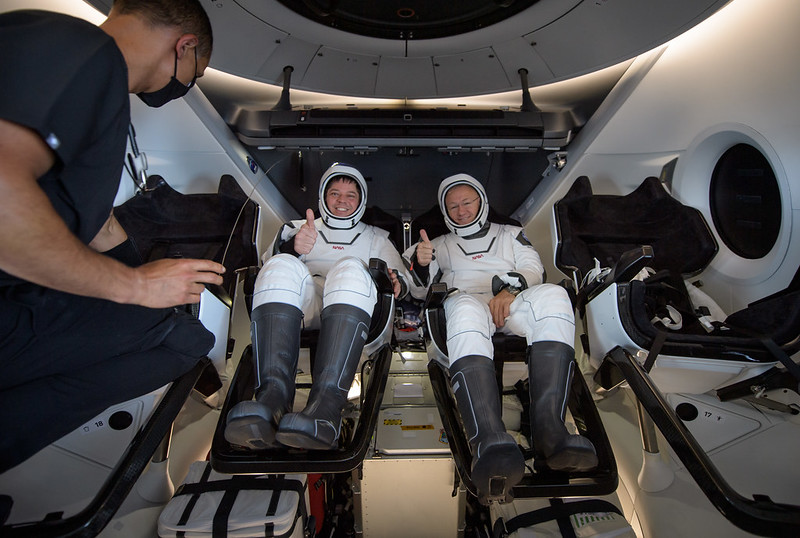
Monday, August 3, 2020: Yesterday (Aug. 2), NASA astronauts Bob Behnken and Doug Hurley made their way home to Earth aboard the SpaceX Crew Dragon spacecraft Endeavour which they rode to space on May 30. With the successful splashdown, SpaceX's Demo-2 mission is complete and the company will move on to its first operational crewed Crew Dragon mission, Crew-1.
A space butterfly
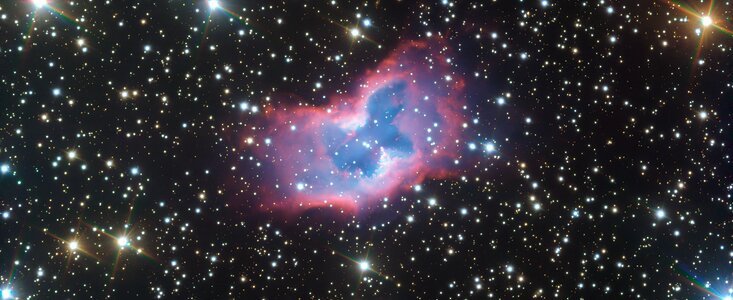
Wednesday, August 5, 2020: This stunning image, taken by ESO’s Very Large Telescope (VLT), shows the "space butterfly," the planetary nebula NGC 2899. The nebula's gases, forming the shape of a cosmic butterfly, stretch out to a maximum of two light-years from its center. The striking structure glows brightly in the Milky Way galaxy.
A successful splashdown

Thursday, August 6, 2020: On Sunday (Aug. 2), NASA astronauts Bob Behnken and Doug Hurley splashed back down on Earth inside of a SpaceX Crew Dragon capsule, successfully completing the SpaceX Demo-2 mission to and from the International Space Station. This was the first splashdown landing for the U.S. in roughly 45 years.
Saturn in striking detail
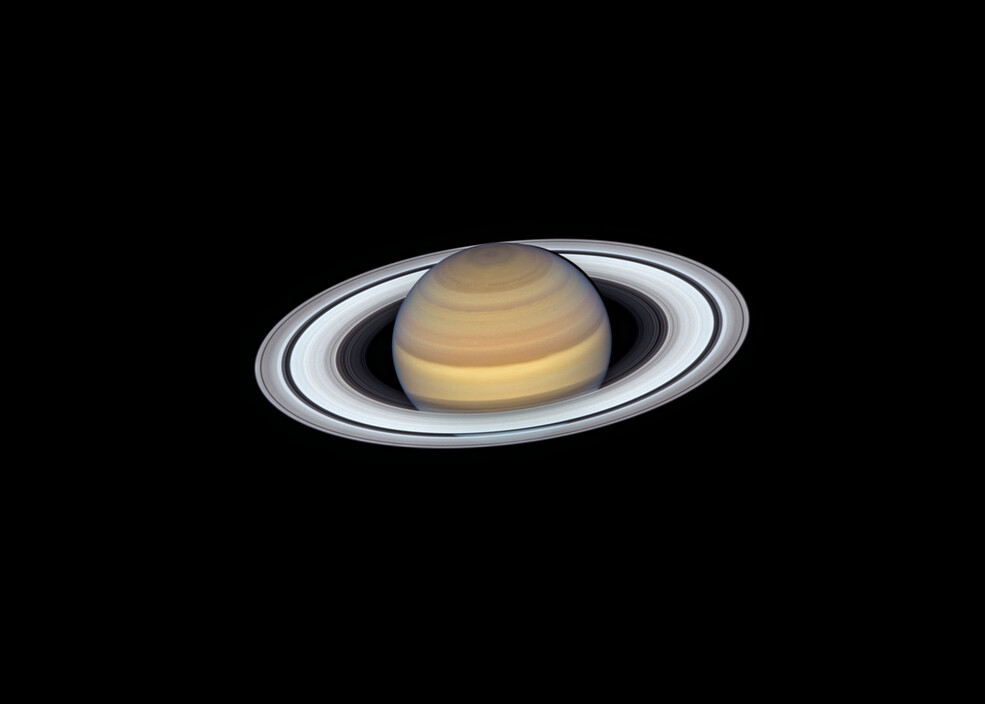
Friday, August 7, 2020: This image of Saturn, snapped by the NASA/ESA Hubble Space Telescope, reveals the planet's swirling, turbulent atmosphere and striking, signature rings. You can even see the planet's mysterious "hexagon," the hexagonal storm constantly swirling at its north pole, right on "top" of the planet.
Red sky observatory
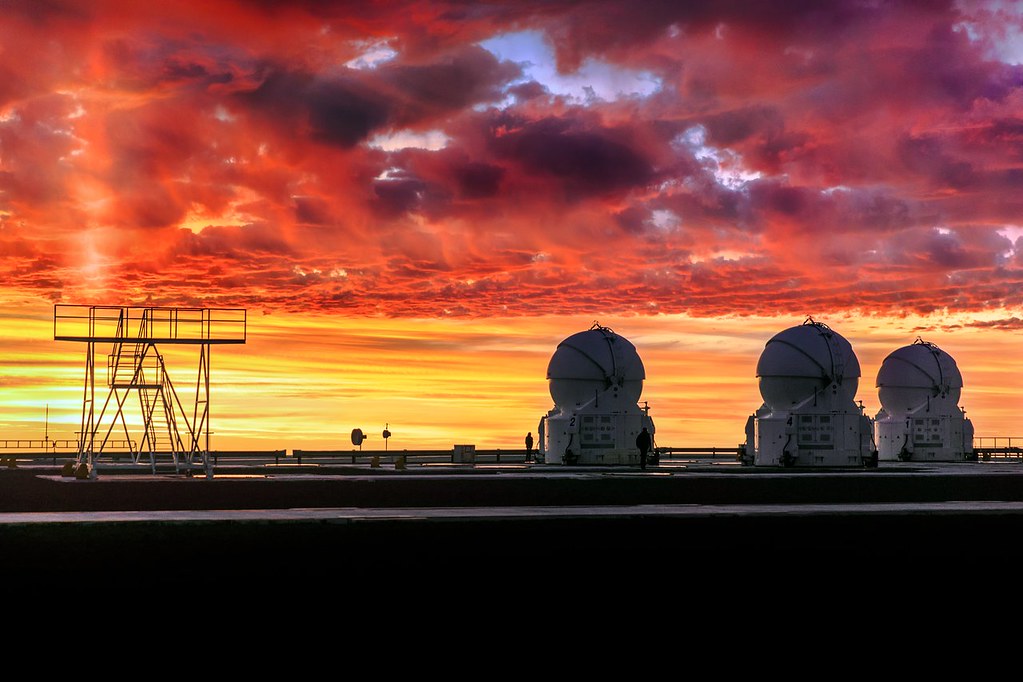
Friday, August 10, 2020: The setting sun created an array of colorful clouds above the European Southern Observatory's Paranal Observatory in the Atacama Desert in Chile, which is home to the Very Large Telescope. In addition to the beautifully hued clouds, you might be able to spot a "sun pillar" in the upper left of this image. A sun pillar is a bright column of light created when tiny particles of ice in the atmosphere reflect ambient light.
Galapa-gorgeous

Tuesday, August 11, 2020: NASA astronaut Chris Cassidy snapped this breathtaking shot of the Galapagos Islands from his current post aboard the International Space Station. Cassidy recently bade farewell to fellow astronauts Bob Behnken and Doug Hurley who successfully and safely made their way back to Earth and, in doing so, completed the SpaceX Demo-2 mission.
Mauritius oil spill
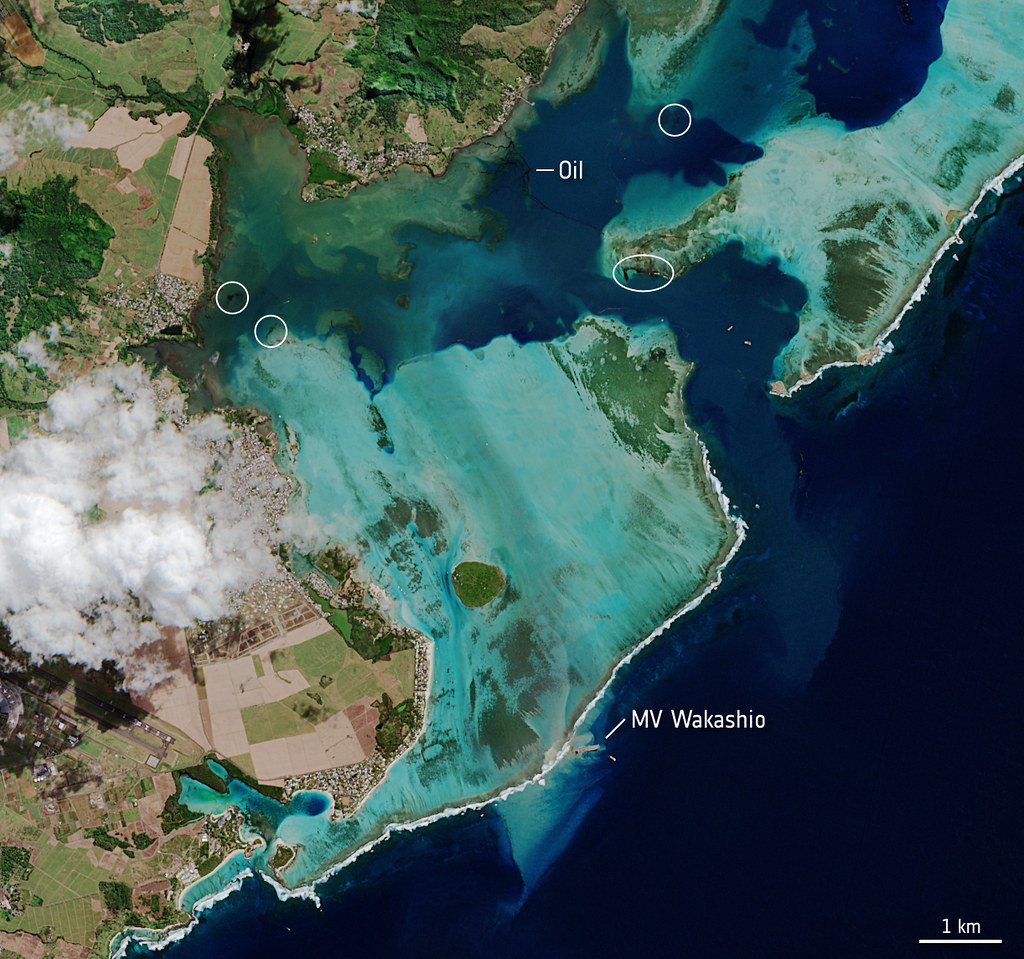
Wednesday, August 12, 2020: The Copernicus Sentinel-2 captured this image on Aug. 11 of the island of Mauritius, which has declared a "state of environmental emergency" following an oil spill, from space. In the image, you can see the vessel MV Wakashio, which was reported to be carrying about 4,000 tons of oil, stranded near an important wetland area.
Get the Space.com Newsletter
Breaking space news, the latest updates on rocket launches, skywatching events and more!
Crew-1 prepares
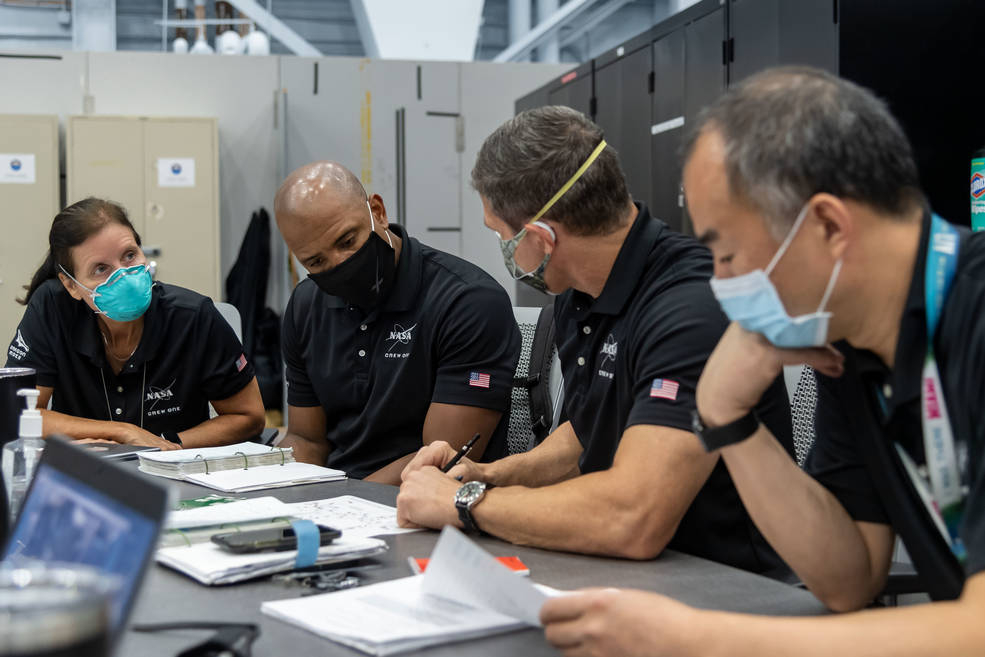
Thursday, August 13, 2020: The astronauts who will fly as part of SpaceX's Crew-1 mission, Crew Dragon commander NASA astronaut Mike Hopkins, pilot and NASA astronaut Victor Glover and mission specialist, fellow NASA astronaut Shannon Walker and mission specialist and JAXA astronaut Soichi Noguchi. The four will launch with this mission aboard SpaceX's Crew Dragon vehicle to the International Space Station.
Saluting the sun

Friday, August 14, 2020: After four months of total darkness, on Aug. 11, the sun finally rose at the Concordia research station in Antarctica. Here, you can see ESA-sponsored medical doctor Stijn Thoolen (left) and engineer Wenceslas Marie-Sainte (right) celebrating the sunrise. The pair are part of a 12-member crew spending a year working, living and researching at the station.
A sparkling star cluster
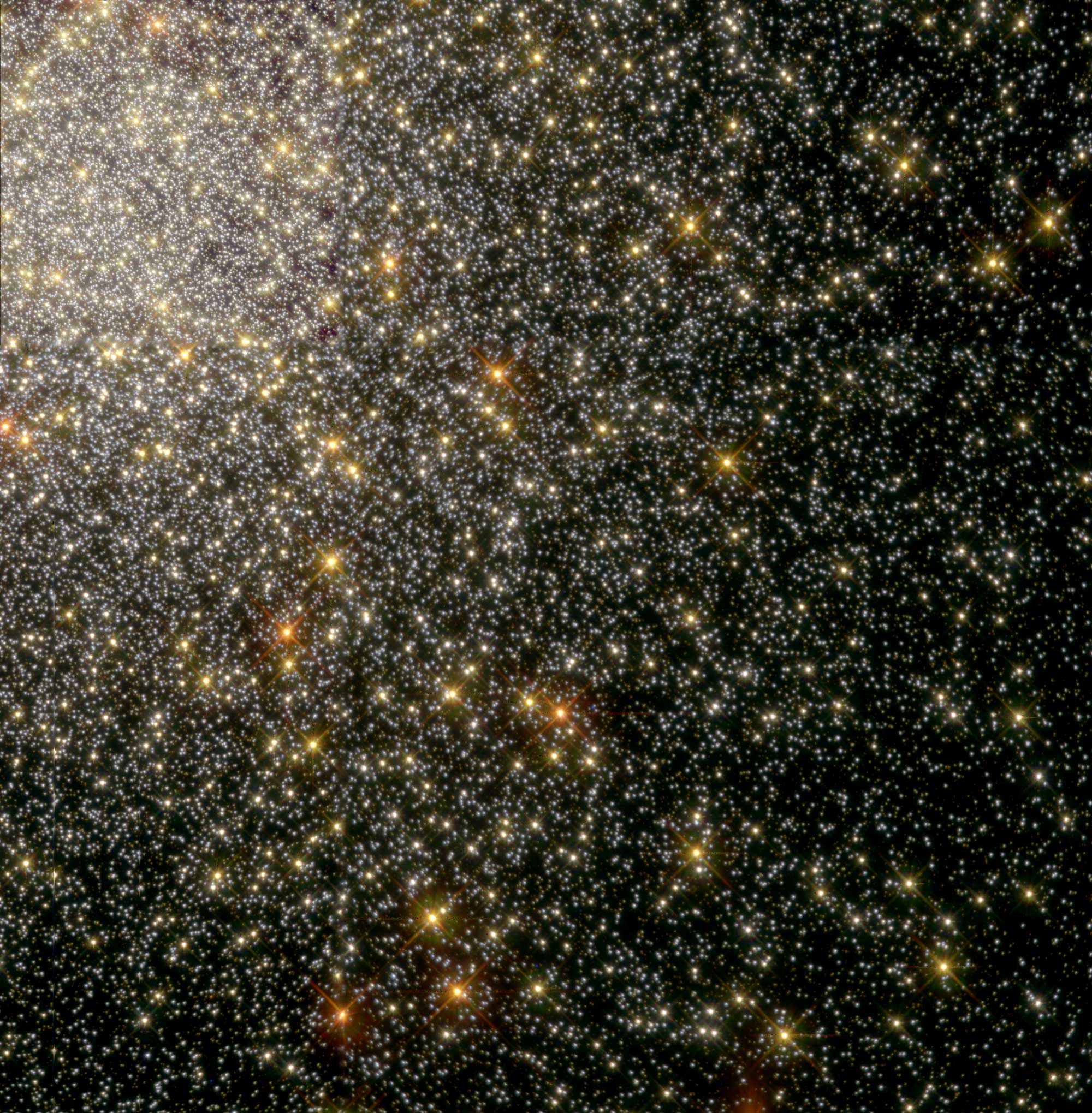
Monday, August 17, 2020: The Hubble Space Telescope Wide Field and Planetary Camera 2 snapped this image of the globular star cluster 47 Tucanae. In this image there are about 35,000 stars near the cluster's center. In this picture you can see the natural colors of the stars, which allow scientists to determine things like how old the stars might be and what they could be made out of.
Crew-1 ready to roll

Tuesday, August 18, 2020: SpaceX's Crew-1 mission, its first fully crewed, fully operational Crew Dragon mission to the International Space Station, is gearing up to launch no sooner than Oct. 23, 2020. This is the SpaceX Crew-1 official crew portrait with the full mission crew. From the left you can see NASA astronauts Shannon Walker, Victor Glover, Mike Hopkins and JAXA astronaut Soichi Noguchi.
A spectacular galactic cluster
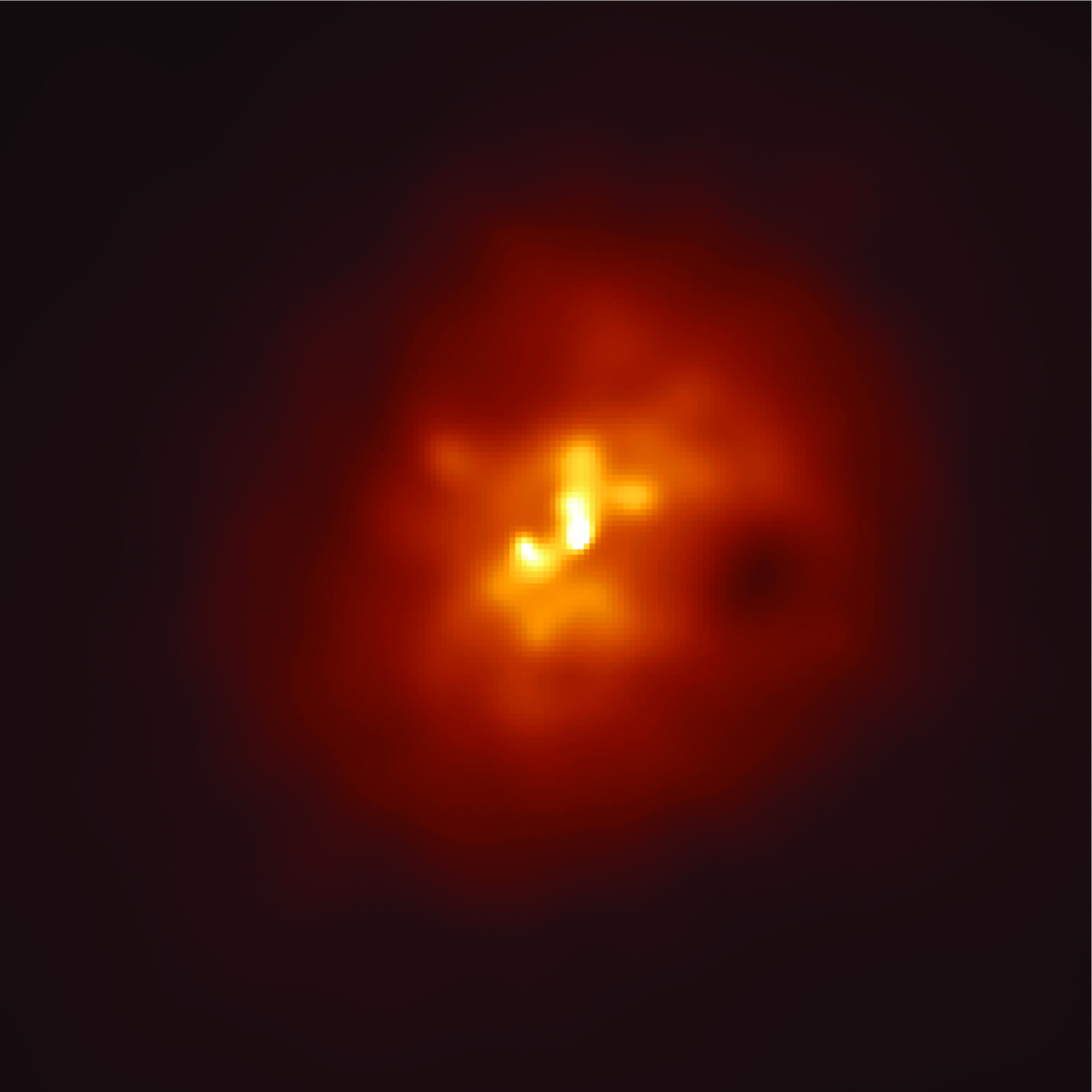
Wednesday, August 19, 2020: This image of the galaxy cluster Abell 2597 was spotted by NASA's Chandra X-ray observatory. In the image, you can see a cloud of hot gas with two dark "ghost cavities" resting about 100,000 light-years from its bright center. The ghost cavities are thought to be the ancient relics of an eruption from around a black hole.
Hurricane Genevieve
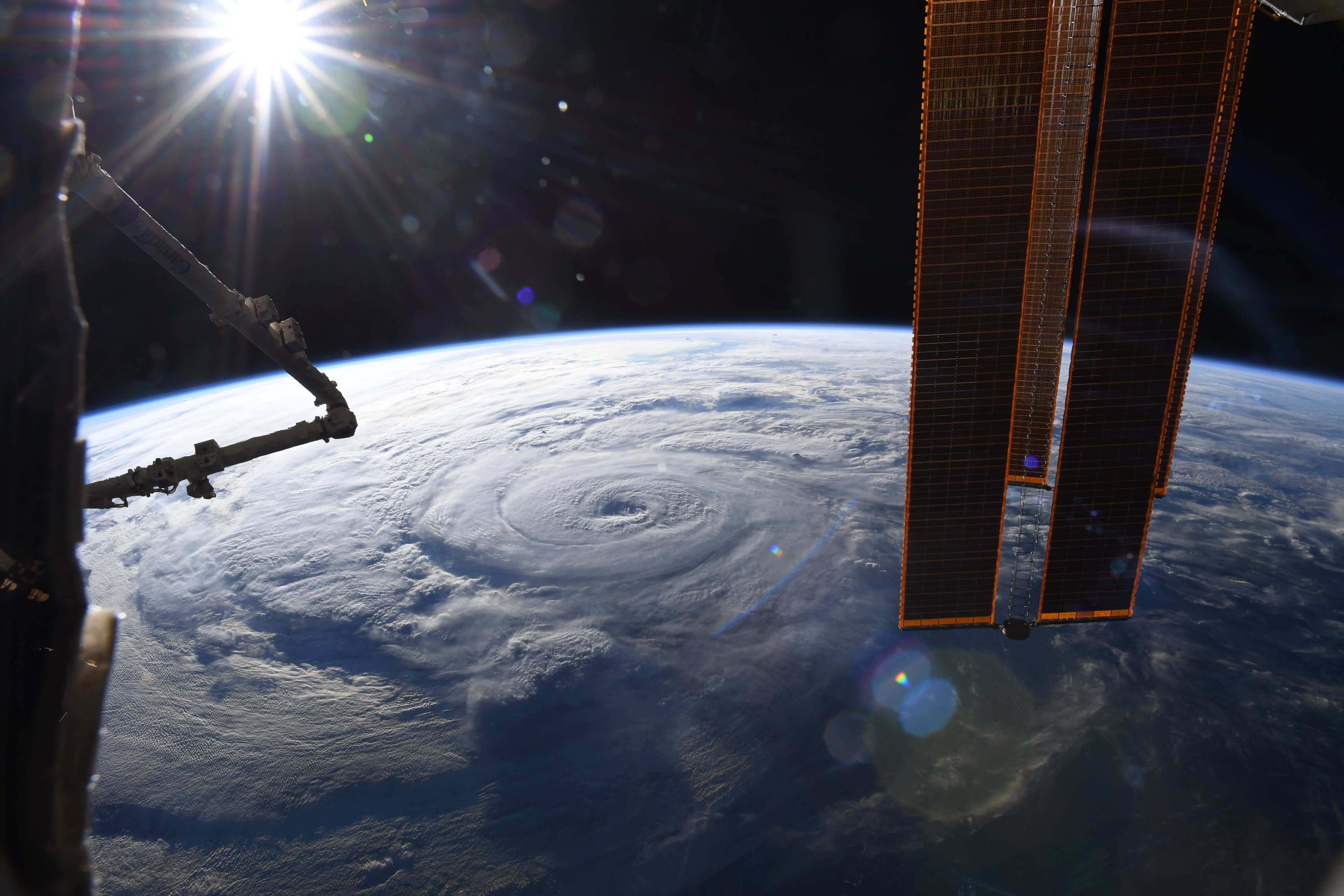
Thursday, August 20, 2020: NASA astronaut Chris Cassidy shared this photo of Hurricane Genevieve snapped from the International Space Station. The storm, which is enormous and swirling on in the Pacific Ocean, has grown into a Category 4 hurricane.
Out-of-this-world fireworks
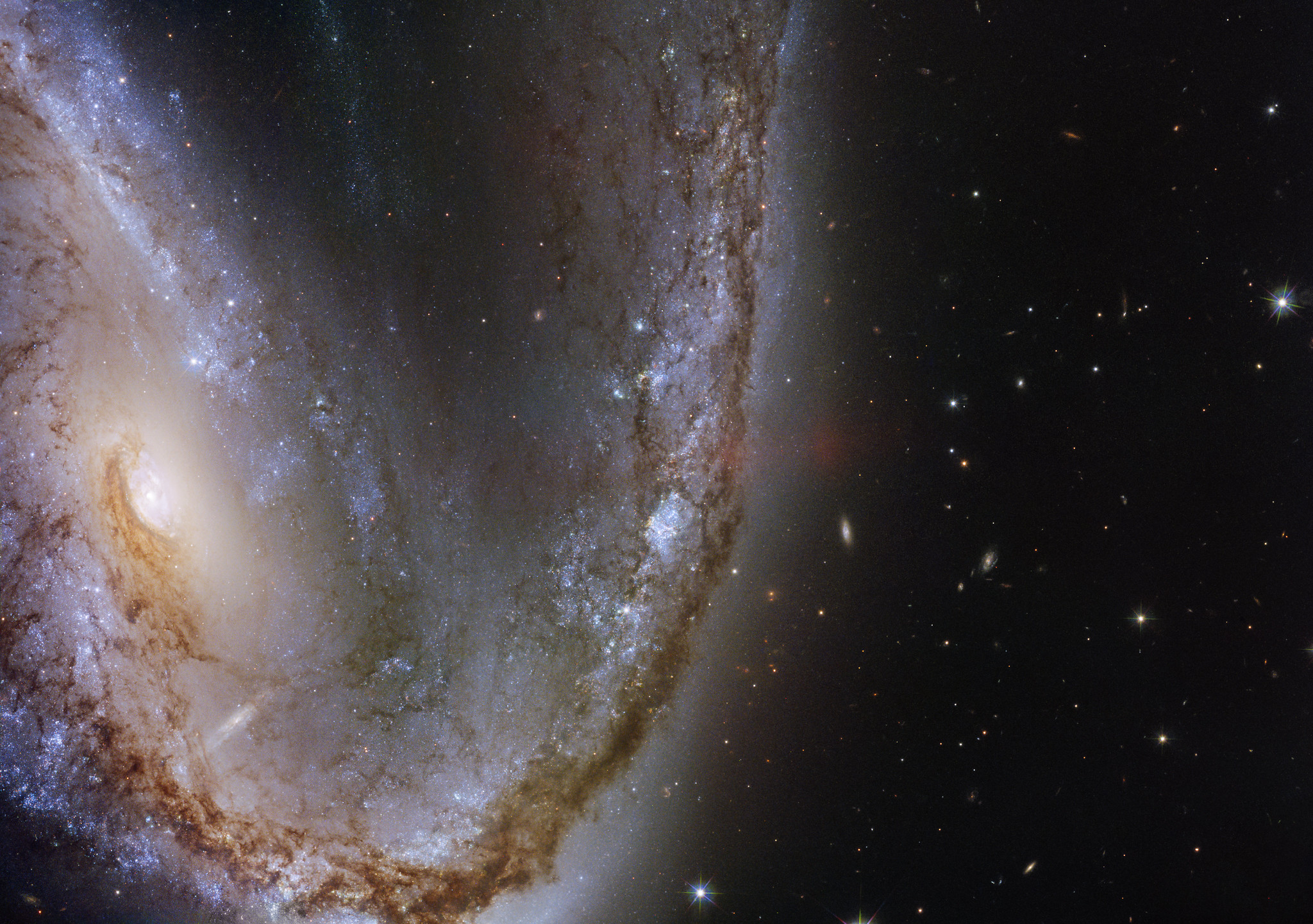
Friday, August 21, 2020: The Hubble Space Telescope captured a spectacular, cosmic fireworks show in this image of the galaxy NGC 2442, nicknamed the Meathook Galaxy because of its unusual shape. This galaxy held the white dwarf star supernova SN2015F, which was first discovered in March 2015.
The Barred Method
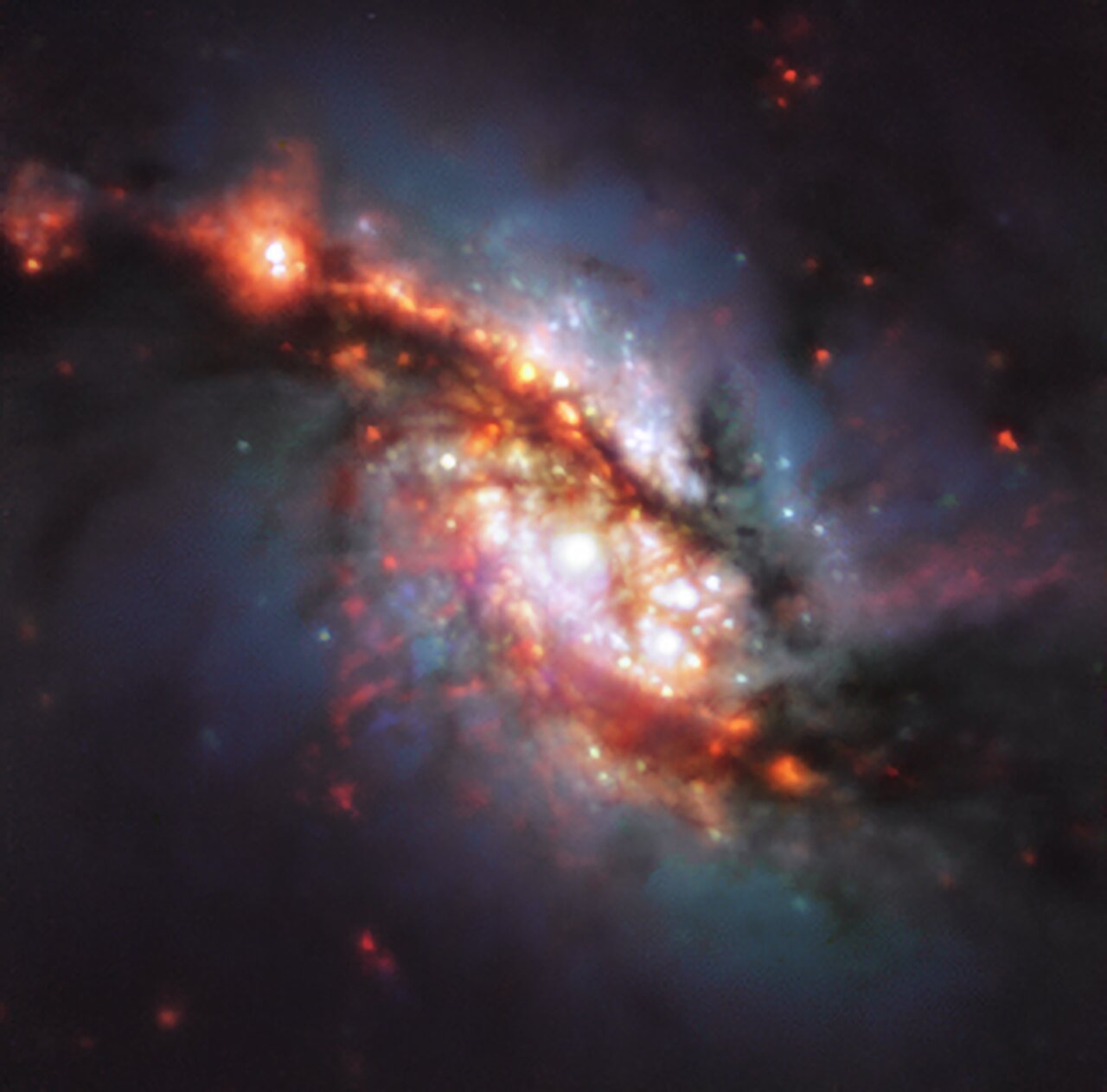
Monday, August 24, 2020: The double-barred spiral galaxy NGC 1365 is seen by the Very Large Telescope of the European Southern Observatory in Chile. It's known as the Great Barred Spiral Galaxy.
NGC 1635 is located 56 million light-years away in the Fornax galaxy cluster. Its twin bar structure is rare, according to ESO, and is thought to be caused by both the galaxy's rotation and the intricate dynamics of its stars. -- Tariq Malik
Hurricane Laura from space
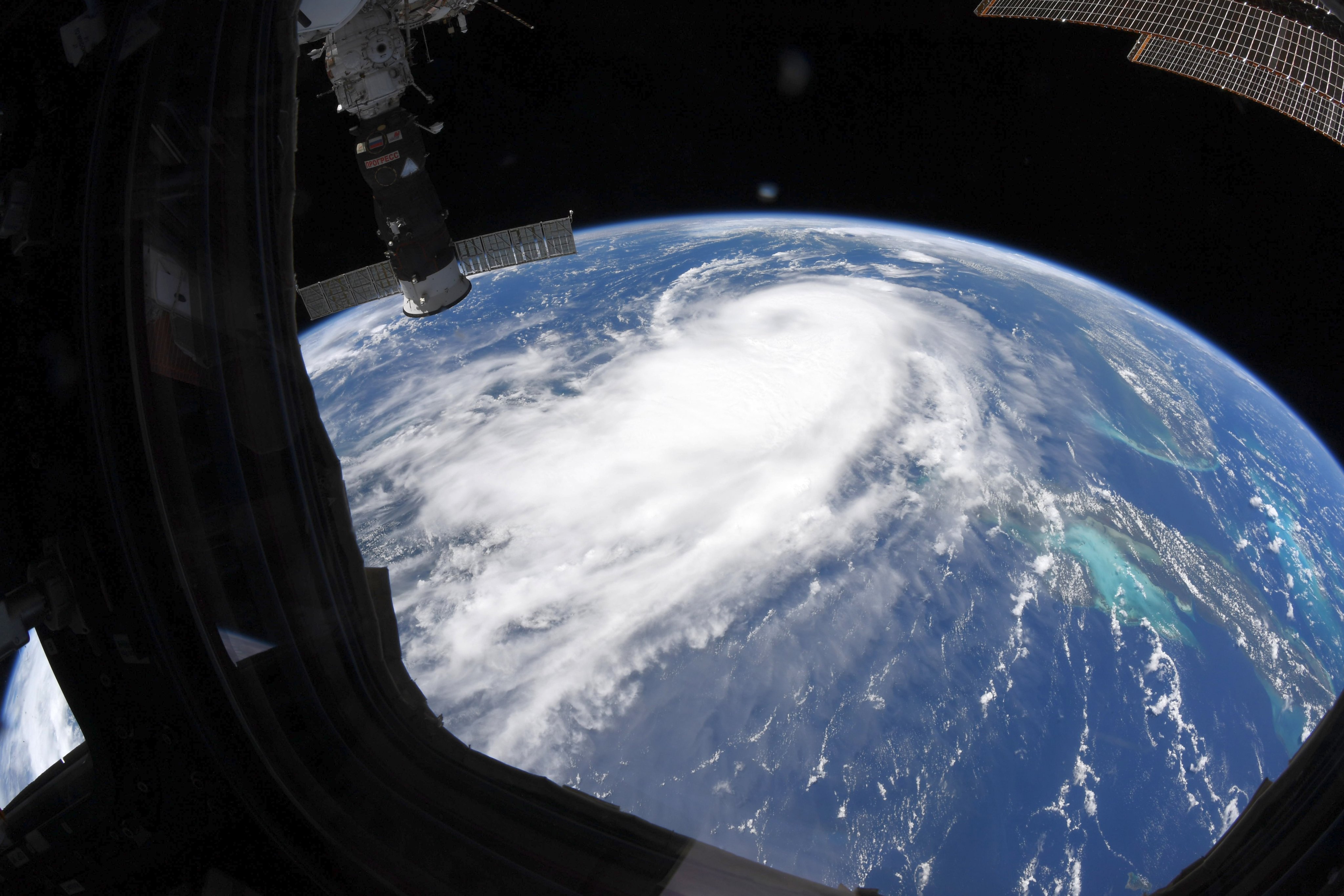
Tuesday, August 25, 2020: Hurricane Laura looks fearsome in the Gulf of Mexico from orbit in this view from the International Space Station by NASA astronaut Chris Cassidy.
Cassidy captured this view on Aug. 25 as Laura reached hurricane status while making its way toward the U.S. Gulf Coast. The storm is expected to make landfall Thursday, Aug. 27, as a powerful Category 3 storm. -- Tariq Malik
A spectacular, diffuse nebula
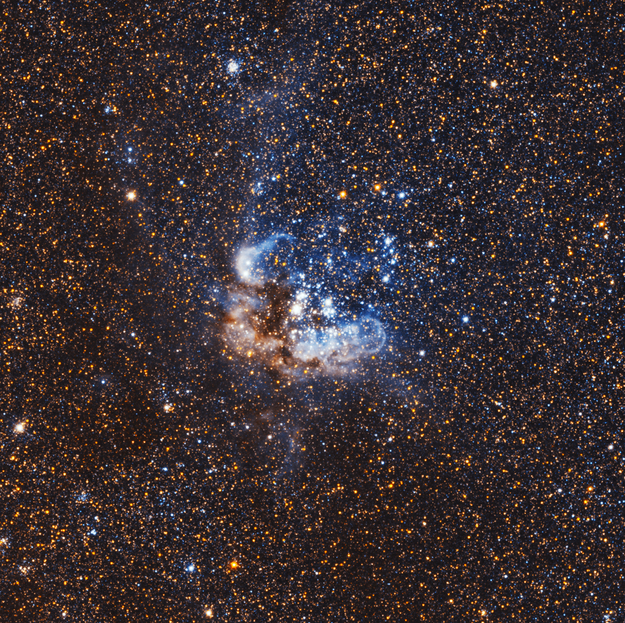
Thursday, August 27, 2020: This image, snapped by the Hubble Space Telescope, shows the enormous, fluffy-looking nebula NGC 595. The nebula, located about three million light-years away from Earth in the Triangulum Galaxy, is made up of ionised hydrogen.
Galactic tails
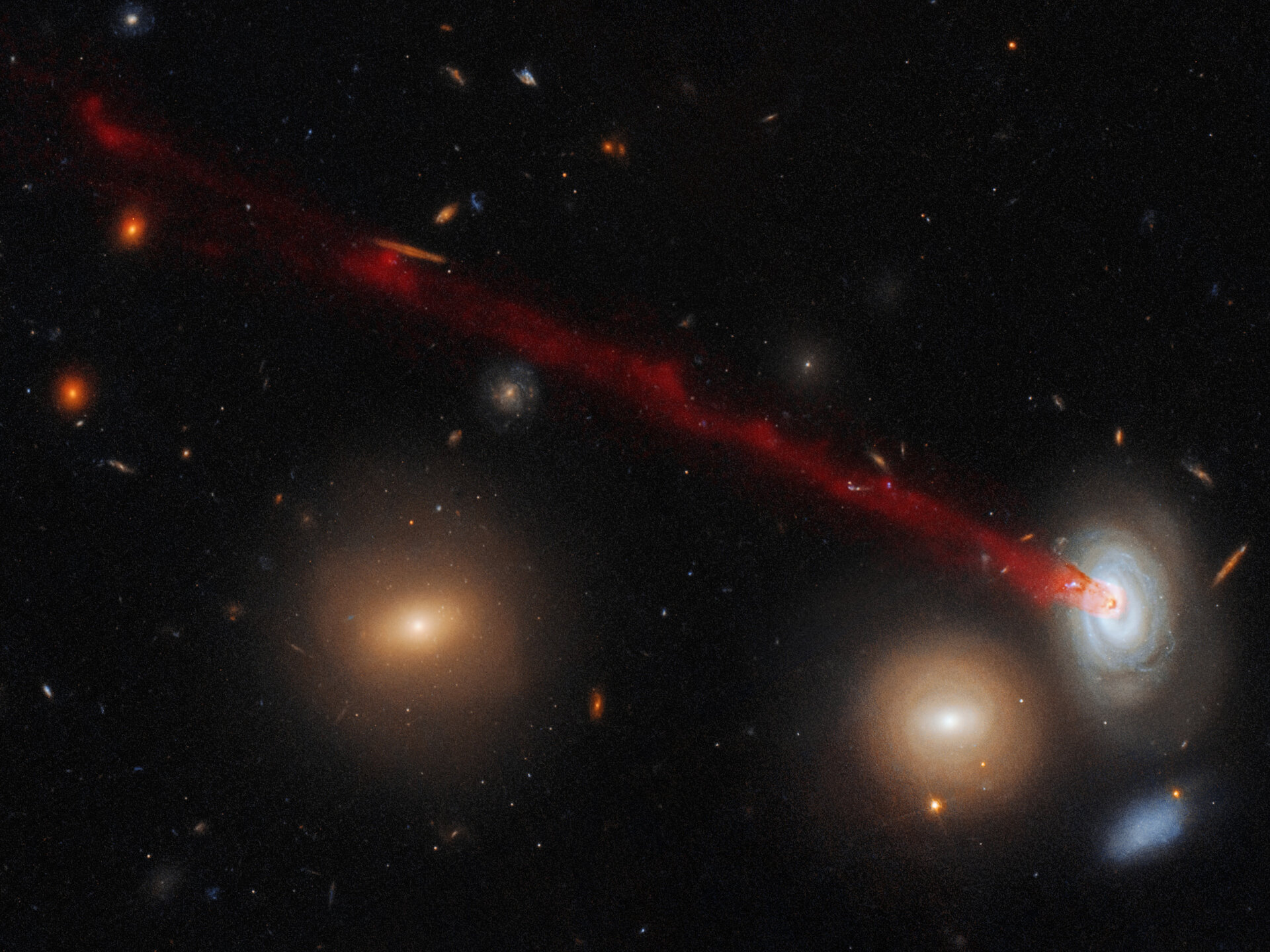
Friday, August 28, 2020: In this image, which combines data from the Advanced Camera for Surveys (which is installed on the Hubble Space Telescope) and the Subaru Telescope in Hawaii, you can see a cosmic tail emerging from the spiral galaxy D100.
SpaceX nails another launch and landing
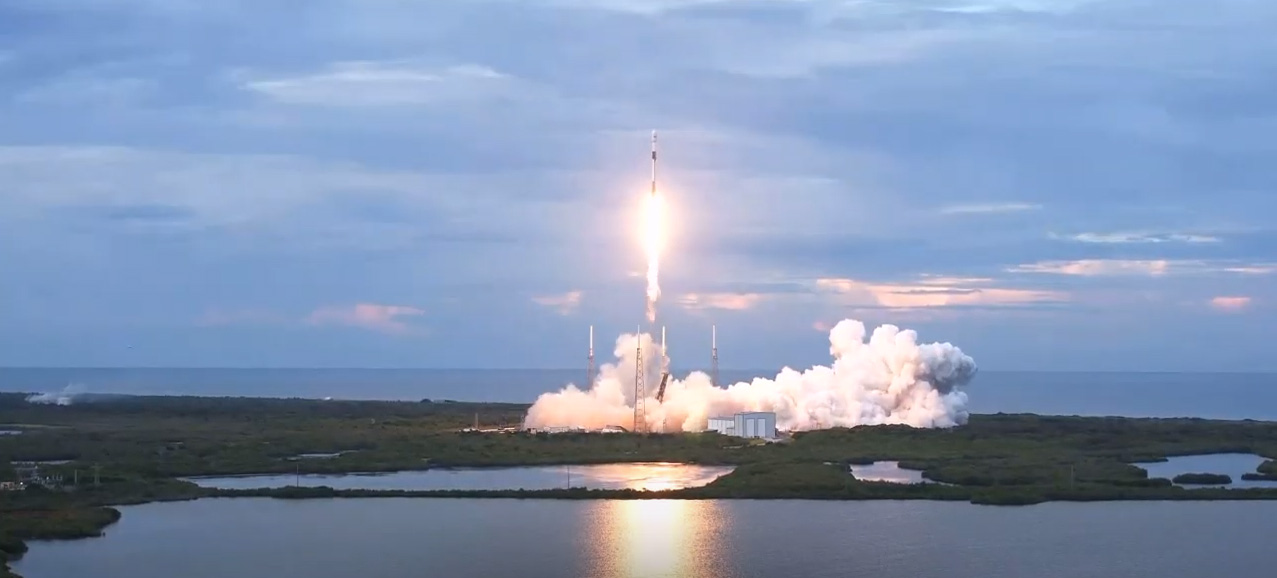
Monday, August 31, 2020: Saturday (Aug. 30, 2020), SpaceX's Falcon 9 rocket blasted off from Cape Canaveral Air Force Station in Florida, carrying the SAOCOM 1B Earth-observation radar satellite for Argentina and two small rideshare payloads. This was SpaceX's 15th launch of the year, successfully lifting off at 7:18 p.m. EDT (2318 GMT). Soon after launch, the booster's first stage landed perfectly back on Earth.
Can't find the date you're looking for? It may have been a weekend or holiday, when we don't normally update our Image of the Day.
Click 'NEXT PAGE' below for September >
Join our Space Forums to keep talking space on the latest missions, night sky and more! And if you have a news tip, correction or comment, let us know at: community@space.com.
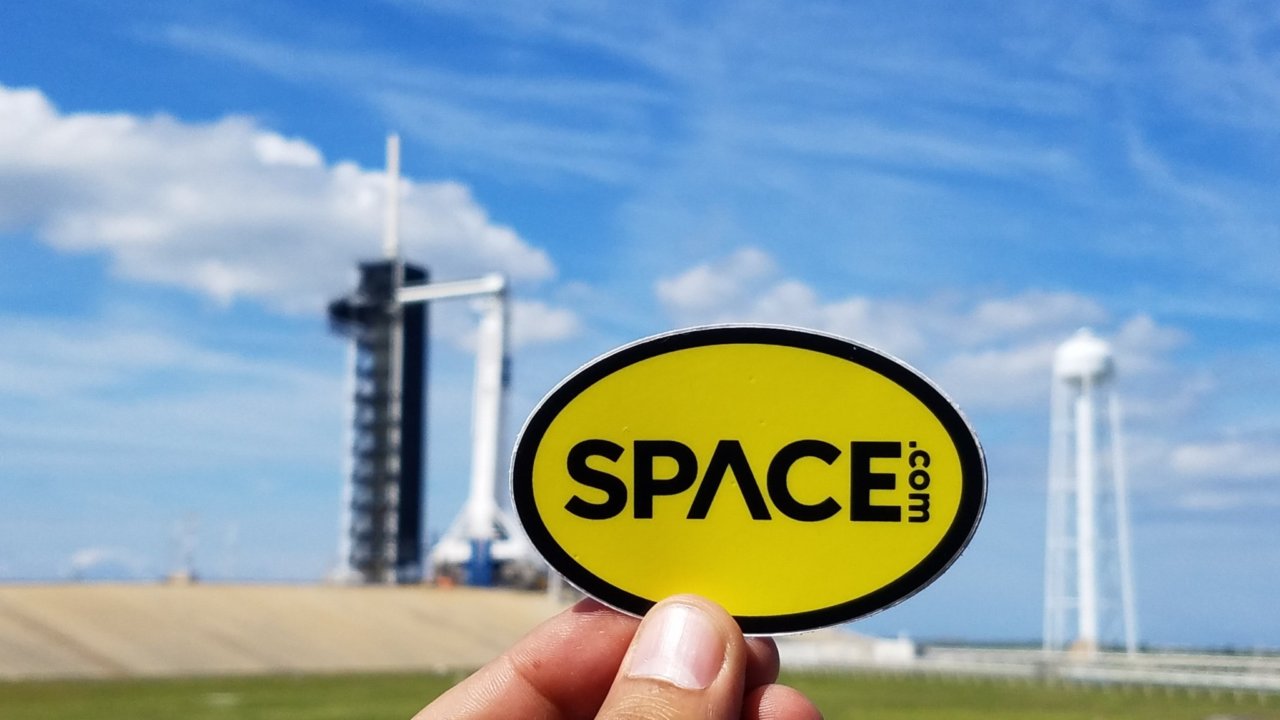
Space.com is the premier source of space exploration, innovation and astronomy news, chronicling (and celebrating) humanity's ongoing expansion across the final frontier. Originally founded in 1999, Space.com is, and always has been, the passion of writers and editors who are space fans and also trained journalists. Our current news team consists of Editor-in-Chief Tariq Malik; Editor Hanneke Weitering, Senior Space Writer Mike Wall; Senior Writer Meghan Bartels; Senior Writer Chelsea Gohd, Senior Writer Tereza Pultarova and Staff Writer Alexander Cox, focusing on e-commerce. Senior Producer Steve Spaleta oversees our space videos, with Diana Whitcroft as our Social Media Editor.









